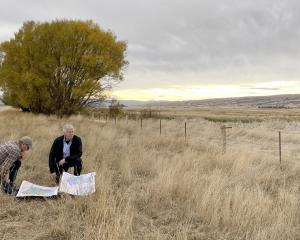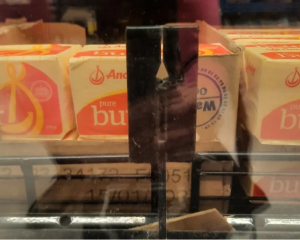Commodity prices have soared to record levels, suggesting farmers and other exporters could be about to enter a prosperous era.
The ANZ commodity price index, which tracks returns for 17 commodities, rose 2.7% in February.
It has increased 21% in the past six months.
The ASB is also expecting prosperous times for farmers, with demand for meat and dairy products outstripping supply and underpinning high prices that could last for another season at least.
But this also suggests further price pressure for consumers already reeling from high milk prices, which prompted Fonterra to announce a price freeze last week for the remainder of this year.
The ANZ reports 13 commodities increased in price last month: skins by 13%, milk powder, sawn timber and venison by 5%, sheepmeat by 4%, aluminium and butter by 3% and wool, casein, cheese, wood pulp and seafood by up to 1%.
Beef and log prices eased 1%, and kiwifruit and apples were static.
ANZ economist Steve Edwards said benefits from these higher prices would start to flow through the economy.
ASB chief economist Nick Tuffley said with virtually all this season's dairy production sold, there was little scope for a further increase in the payout, which was increased last week by 60c a kg of milk solids to between $7.90 and $8.
While the focus has been on soaring dairy returns, sheep and beef farmers are enjoying some of their best returns ever as global demand pushes up the price of beef and lamb.
The United States Department of Agriculture reports the tightest grain supplies for 15 years, accentuated by 40% of the country's grain crop being used for ethanol.
This will affect grain-fed dairy and beef production, but Mr Tuffley said domestic US cattle numbers were falling and the low value of the US dollar was encouraging exports.
''For this reason, we expect US beef prices to remain high for some time, which in turn is supportive for New Zealand prices for the remainder of this season and into next.''
High lamb prices were accentuated by a slow season as farmers retained stock longer to reach heavier weights.
''We suspect that this may have inflated prices in the New Zealand market somewhat,'' he said.
There are concerns farmers took advantage of higher prices to slaughter capital stock, which might impact future breeding numbers.
Lambs have averaged $95 this season and Mr Tuffley said there was little to suggest prices would fall next season.
The underlying fundamentals for the dairy industry remained strong, leading to speculation dairy commodity prices had reached a new level and could settle at more than twice their historic average for some time.
Mr Tuffley said Fonterra estimated milk supply grew 1.8% in 2010, less than the 2% expected.
While prices would be volatile in the future, he said a payout next year of above $7 a kg m/s was possible.
''There is still further upside potential for demand from emerging nations such as China. Forecast high oil prices will provide a positive wealth factor for oil-producing nations, which is good for demand.''












